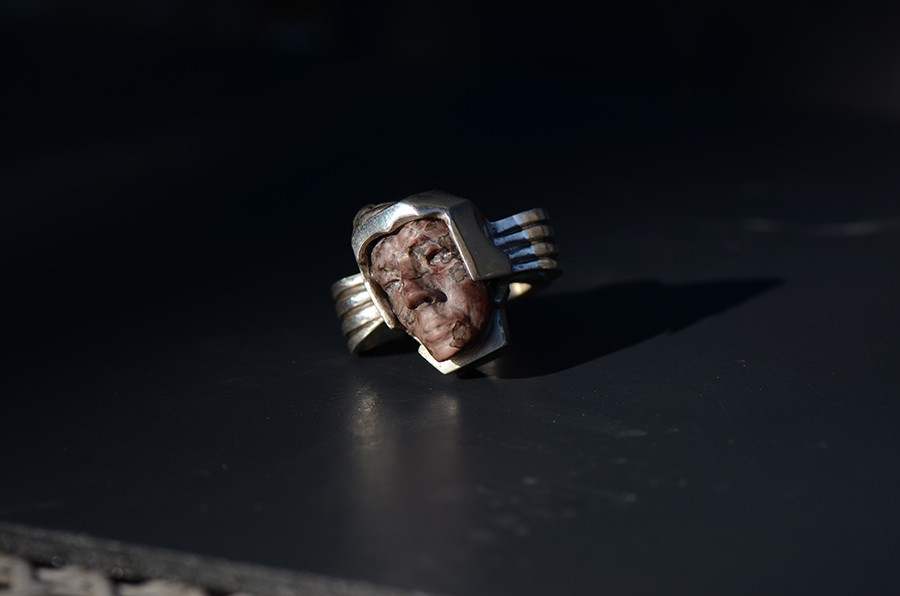
Guilmer jewels are handcrafted in the traditional way. Most of them are one-of-a-kind pieces. They are jewels-objects with strong volumes, sculptural pieces combining the generous material of silver and the brilliance of gemstones and precious stones.
My sources of inspiration
The rocaille style is one of my sources of inspiration, including fields other than jewellery, such as goldsmithing (the Meissonnier, Germain or Duplessis factory), but applied to subjects specific to popular myths, children’s tales or pop culture, such as SF.
The Lost-wax technique
Some of the pieces are made using the lost-wax technique. This process makes it possible to obtain soft and fluid shapes that are not possible with the work of forging and chiseling alone. Although the first models were made 6000 years ago, this technique reached its zenith in the 17th and 18th centuries with famous studios such as that of Thomas Germain, author of impressive organic pieces resulting from a great mastery of multiple techniques.
The Glyptics
Glyptics is an important part of my creative work. It is a very ancient art that is rooted in Assyrian and Egyptian myths and the abundant use of engraved phylacteries. It consists of shaping hard stones and fine stones, such as agate, chalcedony, jasper but also, more broadly, coral, mother-ofpearl and tagua nut by abrasion, using diamond burs. In the first half of the twentieth century, the tagua nut (also called corozo) was widely used for haberdashery and cutlery.
It is also found in the Netsuke tradition, alongside bamboo, shells and ivory, with which the tagua nut is often confused, to the delight of counterfeiters. This extremely hard, though organic, material is also very light, and it can be painted or varnished.

Below: homage to the art of Netsuke. Personal collection (and creation)

